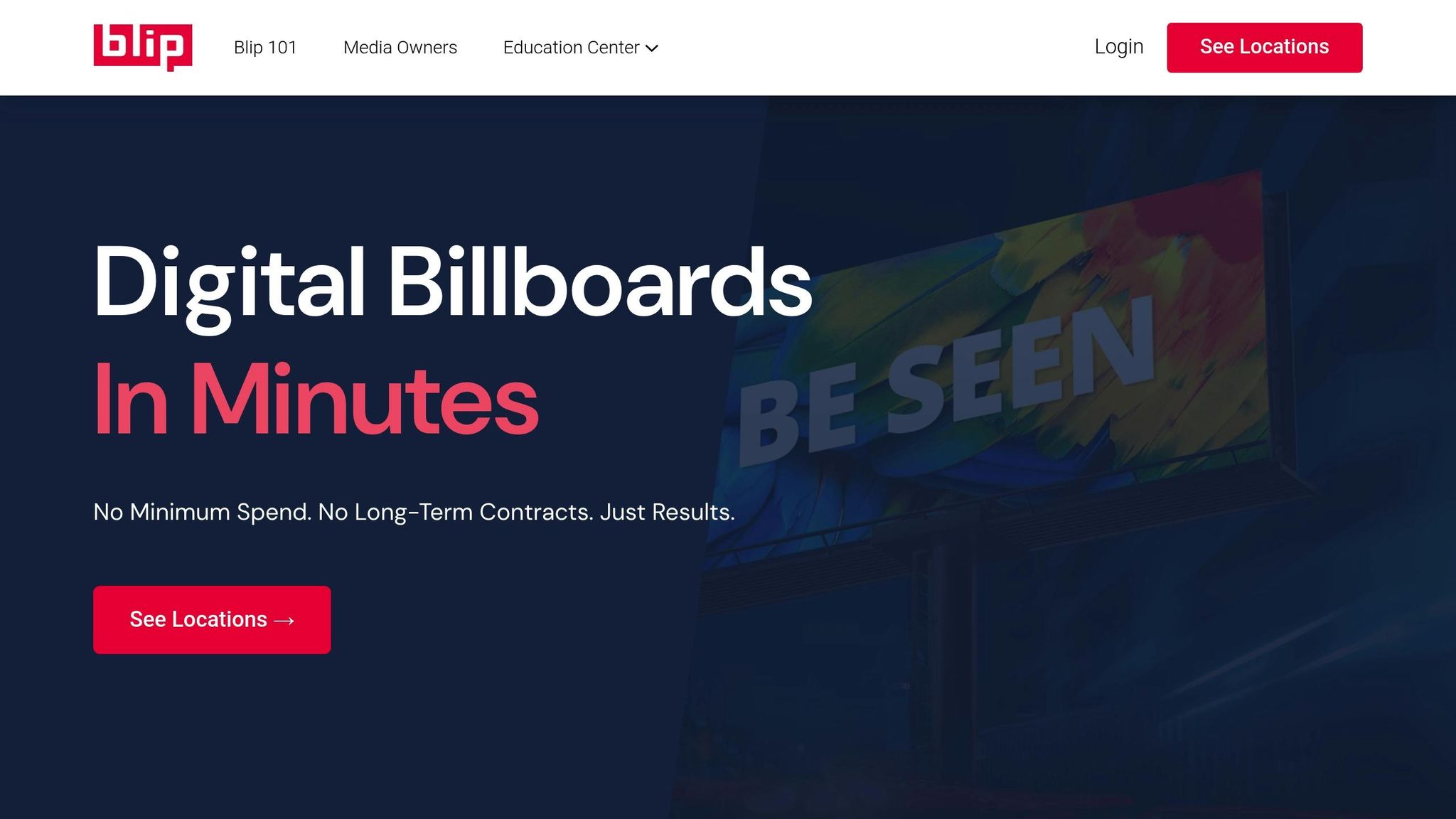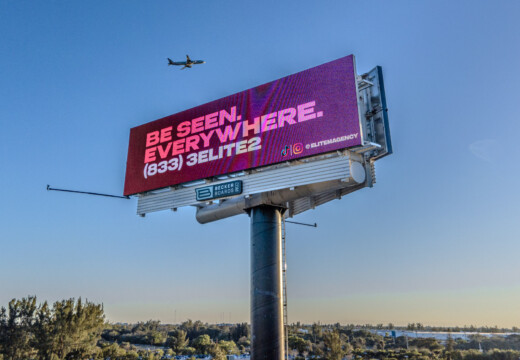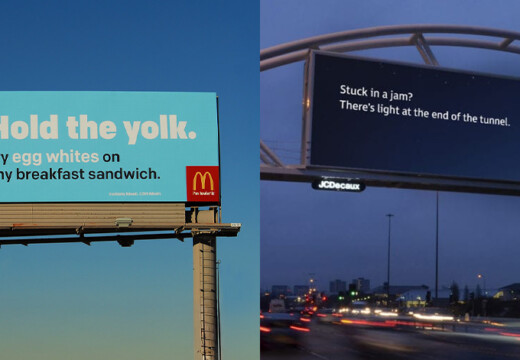Digital billboards are transforming advertising by targeting specific lifestyles, making ads more relevant and effective. Here’s what you need to know:
- What is Lifestyle Targeting? It uses data like commute patterns, shopping habits, and daily routines to display tailored ads that resonate with people’s behaviors and interests.
- Why it Works: Ads feel timely and relevant, leading to up to 70% higher engagement and 16% more sales.
- How it’s Done: Billboards adjust content based on time, location, and audience flow. For example, a morning ad on a commuter route might promote fitness, while evening ads could focus on dining.
- Key Benefits: Better relevance, strategic placement, dynamic updates, and measurable results.
Quick Comparison: Traditional vs. Digital Billboard Campaigns
| Feature | Traditional Billboards | Digital Billboards |
|---|---|---|
| Cost | $1,000+/day | From $20/day |
| Flexibility | Fixed for weeks/months | Real-time updates |
| Targeting | Basic demographics | Lifestyle and behavior-based |
| Performance Tracking | Limited | Instant analytics |
Digital billboards ensure your ads reach the right audience at the right time, maximizing impact and ROI. Start small, test locations, and refine your strategy using real-time data.
[Top Agency Series] Mastering OOH Advertising: Tips and Insights With Amanda Dorenberg of COMMB

Understanding Lifestyle-Based Billboard Targeting
Digital billboards have evolved beyond just targeting broad demographics. Now, they focus on behaviors, interests, and daily routines to reach audiences more effectively.
How Lifestyle Targeting Works
Lifestyle targeting digs into the everyday habits of audiences, such as:
- Commute patterns
- Frequent destinations
- Shopping preferences
- Leisure activities
Using this data, digital billboards can adapt their content to match the lifestyle patterns of people passing by. For example, a billboard on a busy morning commute route might display fitness-related ads to appeal to gym-goers. This approach allows a single billboard location to serve multiple audience segments by tailoring content to different times of the day.
In fact, a study found that the top 10% of prospects identified through lifestyle data were 70% more likely to engage with billboard ads compared to the average audience.
This approach, rooted in behavior rather than static demographics, unlocks a range of benefits.
Why Choose Lifestyle Targeting
Lifestyle-based targeting offers clear advantages over traditional methods. Here’s how it stands out:
| Advantage | Impact |
|---|---|
| Enhanced Relevance | Messages align with real behaviors and interests, making them more impactful. |
| Strategic Placement | Ads reach people in places they naturally frequent. |
| Improved Response | Properly targeted segments can see up to a 70% increase in engagement. |
| Dynamic Adaptation | Billboard content shifts based on time and audience flow. |
Take this example: In 2023, a pet store chain used mobile data to pinpoint billboard locations near affluent neighborhoods with high pet ownership. By dividing the day into 14 targeting zones and adjusting content to match audience flow, they achieved significantly higher engagement rates with their ideal customers.
The strength of lifestyle targeting lies in its ability to deliver personalized messages at the perfect moment and in the right context. With the addition of interactive sensors, billboards can even adapt content in real time to match audience profiles.
Setting Up Lifestyle-Targeted Billboard Campaigns
Creating effective lifestyle-targeted billboard campaigns requires a strategic approach. Considering that $37 billion is wasted annually on ineffective ads, it’s clear that precision is key. Here’s how to make your campaigns work smarter.
Understand Your Audience’s Daily Routines
Knowing how your audience spends their day is crucial for choosing the right media, message, and timing. Start by mapping out their daily habits to identify the best moments to engage them.
Here are some ways to gather useful insights:
- Dive into customer data (like Google Analytics) to track traffic and engagement patterns.
- Check social media metrics to find peak activity times.
- Conduct surveys to learn about common commute routes and popular destinations.
- Observe foot traffic around potential billboard locations.
Blip’s interactive marketplace is a great tool for accessing detailed impression data and demographic insights, helping you fine-tune your targeting strategy.
Pick Billboard Locations That Matter
Placement is everything. Choose billboard locations that naturally fit into your audience’s routines:
| Location Type | Target Lifestyle Group | Best Display Times |
|---|---|---|
| Fitness Districts | Health-conscious professionals | 5 AM – 9 AM, 4 PM – 8 PM |
| Shopping Centers | Retail enthusiasts | 11 AM – 7 PM weekdays, 10 AM – 9 PM weekends |
| Entertainment Zones | Social activities seekers | 4 PM – 11 PM |
| Business Districts | Career-focused professionals | 7 AM – 10 AM, 4 PM – 7 PM |
Research indicates that 80% of consumers prefer brands that offer personalized interactions. By aligning billboard locations with your audience’s movements, you’re already one step closer to making a memorable impact.
Create Ads That Resonate with Lifestyles
Once you’ve nailed down your audience and locations, focus on designing ads that connect with their lifestyle.
Key design tips include:
- Use visuals that reflect your audience’s aspirations and everyday activities.
- Keep messages short and relevant to the setting.
- Incorporate language and imagery that resonate with specific lifestyles.
- Ensure text is large and clear enough to be read from a distance.
Blip’s design guidelines and quick moderation process allow you to test and adjust your creative ideas efficiently. Plus, the platform’s real-time analytics can help you monitor performance and tweak your campaign for even better results.
sbb-itb-2e2e93f
Improving Campaign Performance
Fine-tune lifestyle-targeted campaigns by keeping a close eye on key metrics and making adjustments on the fly.
Track and Measure Results
To gauge how well your campaign is performing, focus on these crucial metrics:
| Metric Type | What to Track | Why It Matters |
|---|---|---|
| Exposure | Daily impressions by location | Understand how many people in your target lifestyle groups are seeing your ads. |
| Timing | Performance by daypart | Pinpoint the times your audience is most engaged. |
| Geographic | Catchment area response | Identify which neighborhoods are responding best to your message. |
| Campaign | Cost per thousand impressions (CPM) | Ensure you’re allocating your budget efficiently. |
By pairing catchment area data with lifestyle insights, you could see campaign performance improve by as much as 70%. Use these insights to make quick, informed adjustments to your strategy.
Update Campaigns in Real Time
Digital billboards offer the flexibility to tweak your campaign in real time. Use live data to keep your messaging relevant and impactful:
- Daypart Optimization: Tailor your content to match your audience’s daily habits, focusing on high-traffic times like mornings and evenings.
- Weather-Based Adjustments: Switch up your creatives to reflect current weather conditions, making your ads more relatable.
- Event-Triggered Content: Boost visibility during local events that draw in your target audience.
These real-time updates work seamlessly with Blip’s platform, making adjustments easier than ever.
Using Blip for Lifestyle Targeting

Blip’s dynamic platform simplifies the process of reaching the right audience. Here’s how it helps you maximize your campaign:
- Real-Time Bidding: Every 10 minutes, the system optimizes ad placement to get you the best spots.
- Detailed Analytics: Track how your audience is engaging with your ads.
- Flexible Dayparting: Align your ads with your audience’s movements throughout the day.
- Smart Location Selection: Choose billboard locations based on demographic and behavioral data in specific catchment areas.
Blip also allows you to display different ads across up to 14 time slots each day. This level of precision ensures your campaign reaches the right lifestyle segments at the right time. Regularly reviewing performance and tweaking your strategy ensures your campaign stays impactful, cost-effective, and relevant to your audience.
Successful Lifestyle Campaign Examples
Here’s a closer look at some standout lifestyle campaigns that have achieved real, measurable results.
Fitness and Wellness Campaigns
Gymshark has set a benchmark in fitness advertising by keeping its messaging genuine and relatable. Stephanie O’Neill, Head of PR at Gymshark, highlights their approach:
“It’s all about being authentic. The vast majority of Gymshark ambassadors were once fans and consumers of the brand. Who better to represent the brand than those who actually love Gymshark?”
This authenticity has resonated deeply with their audience, creating a loyal community around the brand. Similarly, Rebel’s campaign delivered impressive results, boosting click-through rates by 20%, cutting cost per click by 22%, and attracting 21,000 unique monthly visitors.
Nike also made waves with its “Until We All Win” campaign. By featuring diverse athletes and artists on digital billboards, the campaign promoted inclusivity and connected with health-conscious audiences. Their “BeTrue” initiative further reinforced this message, celebrating diversity and unity.
Green Living Campaigns
Sustainability campaigns have also made their mark. Back Market’s January 2025 initiative is a prime example of eco-focused marketing. Luke Forshaw, Head of Brand at Back Market, explained the campaign’s vision:
“Partnering with Patrick Vernuccio and Life After Ad has been an exciting opportunity to bring our shared values to life. At Back Market, we’re dedicated to fostering a circular economy, and this initiative truly embodies that commitment. Repurposing our old OOH ads into grow bags gives them a new beginning, just like our refurbished tech, and we’re incredibly excited to see the generation of the future learning how they can continue this mission.”
This campaign turned old billboard materials into grow bags for a community garden at Hackney City Farm, blending sustainability with meaningful community involvement. It sent a strong message about green living while leaving a tangible impact.
Leisure and Events Campaigns
Lifestyle campaigns targeting leisure and events have also proven to be highly effective. Consider these stats:
| Metric | Impact |
|---|---|
| Awareness | 71% of people notice digital billboards |
| Visits | 26% of viewers visit the advertised websites |
| ROI | 46% higher than traditional media |
Blip leverages real-time bidding and precise location targeting to help advertisers fine-tune campaigns during local events. This approach ensures that messages reach the right audience at the perfect moment, maximizing engagement and return on investment. Placing billboards in areas where your target audience naturally gathers can significantly boost campaign effectiveness.
These examples highlight how fitness, sustainability, and leisure-focused campaigns can connect with audiences in meaningful ways while delivering measurable outcomes.
Next Steps and Summary
Digital billboards offer a flexible and precise way to target audiences across 14 different catchment areas, tailored by time of day and day of the week. Let’s take a closer look at how they stack up against traditional billboard campaigns:
| Campaign Element | Traditional Approach | Digital Billboard Strategy |
|---|---|---|
| Daily Investment | $1,000+ minimum | Starting at $20/day |
| Location Changes | Fixed for weeks/months | Adjust in real time |
| Performance Data | Limited reporting | Instant analytics |
| Audience Targeting | Basic demographics | Lifestyle + behavior based |
This comparison underscores the flexibility and precision of digital billboard campaigns. By strategically choosing locations and utilizing real-time data, you can ensure your ads reach the right audience at the right time.
With Blip’s marketplace platform, you’ll have the tools to:
- Choose high-impact locations using detailed impression data.
- Adapt campaigns on the fly based on real-time performance metrics.
- Track your ROI with comprehensive analytics.
- Scale your budget incrementally based on campaign success.
Kick off your campaign by launching a test in a location that aligns with your audience’s habits. Use performance insights to make adjustments in real time, ensuring you’re optimizing every dollar spent. Best of all, there are no long-term commitments – experiment with confidence.
For tips on designing effective billboard ads, visit blipbillboards.com/billboard-design-guidelines/. With the right creative and strategic placement, you can make a lasting impact in the digital advertising space.
FAQs
How can businesses use lifestyle targeting to make their digital billboard campaigns more effective?
Businesses can make their digital billboard campaigns more impactful by using lifestyle targeting. This approach involves tailoring ads to match the preferences, behaviors, and demographics of specific audiences. For instance, you could display ads for hiking gear near parks to attract outdoor enthusiasts, promote gourmet experiences in restaurant districts for food lovers, or showcase tech products in busy urban centers to appeal to professionals. By aligning your message with the right audience at the right moment, you can increase engagement and see better returns on your investment.
Platforms like Blip take this strategy to the next level by providing real-time data on impressions and audience movement. These insights allow advertisers to tweak campaigns on the fly, ensuring ads appear in the most effective locations and time slots. Lifestyle targeting transforms billboards into tools for personalized outreach, helping businesses build stronger connections with their audiences.
What data is essential for creating effective lifestyle-targeted digital billboard ads?
To design lifestyle-focused billboard ads that truly connect, start by diving into key audience data. This includes demographics like age, gender, and income level, as well as psychographics, which cover lifestyle choices, interests, and personal values. Don’t overlook location-based insights either – knowing the habits and behaviors of people near your billboard can make all the difference.
When you combine this data, you can create ads that speak directly to your audience’s preferences and needs. The result? Messages that don’t just catch eyes but stick in people’s minds. The deeper your understanding of your audience, the more likely your campaign will strike a chord.
How do digital billboards compare to traditional billboards in cost, flexibility, and advertising impact?
Digital billboards bring a whole new level of versatility and engagement to outdoor advertising. Unlike traditional billboards, digital ones let you update your message in real time, run several campaigns at once, and even customize ads based on the time of day or audience behavior. This ability to adapt makes digital advertising more interactive and impactful.
Although traditional billboards may have lower upfront costs, they’re limited in terms of flexibility. You can’t quickly change the message or showcase multiple ads. Digital billboards, however, operate on a pay-per-play model, meaning you only pay for the ads that actually run. This gives advertisers more control over their budgets while delivering targeted, high-impact messaging.
Services like Blip make digital billboard advertising accessible, offering campaigns starting at just $20 a day. This allows businesses to create attention-grabbing ads without the hefty price tag or long-term commitment that often comes with traditional outdoor advertising.


